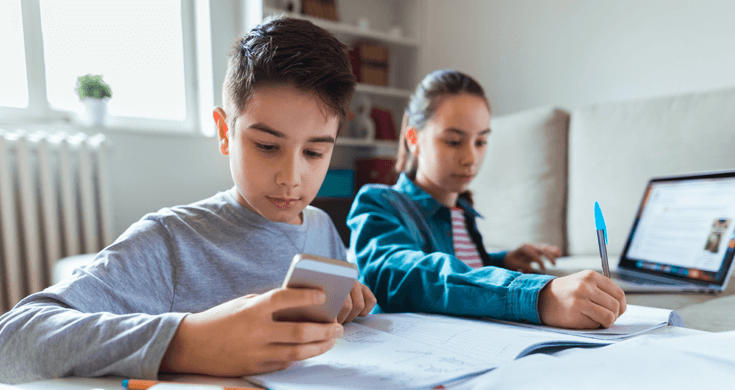Finding good learning apps for kids feels like searching for hidden treasure in a sea of digital junk. I’ve been there – downloading what seemed like a great educational app, only to find my daughter mindlessly tapping through screens or begging for in-app purchases ten minutes later.
After testing dozens of apps with my own kids and gathering feedback from other parents, I’ve put together this no-nonsense guide to apps that actually teach something while keeping kids engaged (and safe). No more wasting money on apps that collect digital dust after one use!
What We’re All Really Looking For
Let’s be honest about what matters when choosing kids’ apps:
“Will my kid learn something useful, or just be entertained with educational window dressing?” “Can I hand over my tablet without worrying about inappropriate content or endless purchase prompts?” “Will this app drain my wallet after the free trial?” “How do I keep my sanity when my child begs for ‘just five more minutes’?”
I’ve asked all these questions too. My son once racked up $40 in “optional learning boosters” before I caught on to what was happening. Not fun.
Best Apps by Age Group (That Kids Actually Like)
For Little Ones (Ages 2-5)
Khan Academy Kids
This completely free app has been my go-to recommendation for years. No ads, works offline, and covers everything from letters and numbers to social skills. My friend’s 3-year-old calls it “the animal game” because of the cute character guides, but she’s learning letter sounds without even realizing it.
Real talk: The app remembers where kids left off, which is perfect for those times you need to quickly hand them a device in the grocery checkout line.
PBS Kids Games
My kids already loved Daniel Tiger and Wild Kratts, so these games were an instant hit. They teach science concepts and emotional skills through familiar characters. Best part? No ads or sneaky purchase prompts when you’re not looking.
Real talk: Each game focuses on specific skills, so when my daughter was struggling with letter sounds in preschool, I could direct her to games that reinforced exactly what she needed.
Endless Alphabet
This one costs money upfront, but it’s worth it. The animated letters crack my kids up – they’ll repeat words like “bellow” and “cooperate” for days after playing. My 4-year-old now uses words that make grandparents raise their eyebrows!
Real talk: Even my 2-year-old who couldn’t read enjoyed this one, and it built pre-reading skills through the sounds and animations.
For Growing Readers (Ages 4-8)
Lingokids
My 6-year-old calls this his “learning playground.” It teaches vocabulary and early reading through games and songs that don’t feel like work. The parent dashboard actually shows you what your kid is learning, unlike some apps that leave you guessing.
Real talk: When my son was obsessed with dinosaurs, I used the parent dashboard to find dinosaur-themed activities that kept him engaged while building vocabulary.
Gus on the Go / Mondly Kids
We started using these before a family trip to Mexico, and I was shocked when my 5-year-old confidently ordered “agua, por favor” at a restaurant. Gus is simpler with basic vocabulary games, while Mondly uses cool AR features that make words appear in the room through the camera.
Real talk: Even just 15 minutes a few times a week made a difference – kids’ brains are language sponges at this age.
Reading Eggs
This app turned my reluctant reader into a kid who asks for “just one more lesson.” The map format with rewards keeps kids moving forward, but they’re actually building real reading skills along the way.
Real talk: The placement test saved us from frustration – my daughter was bored with letter basics but not ready for complex words, and Reading Eggs put her right where she needed to be.
For Bigger Kids (Ages 6-12)
Prodigy Math
My math-resistant 9-year-old willingly practices multiplication because it helps his wizard character defeat monsters. The game adjusts to his level, so he’s always appropriately challenged without getting frustrated.
Real talk: His teacher uses it in class too, which means he sometimes does extra math practice without me even asking. Magic!
DragonBox Algebra
This clever app teaches algebraic thinking through puzzles. My daughter had no idea she was solving equations – she thought she was just playing with cute monsters. When she started formal algebra years later, the concepts already felt familiar.
Real talk: Start with the basic version for younger kids. My 7-year-old figured it out quickly, while I was still trying to understand the tutorial.
ScratchJr / Scratch
These coding platforms from MIT teach programming logic through block-based coding. My 10-year-old created a birthday card animation for his grandmother that made her cry happy tears.
Real talk: The online Scratch community lets kids share projects, but I check what my son is viewing since it’s user-generated content.
Swift Playgrounds
My daughter started with zero coding knowledge and was creating simple games within weeks. The latest version includes AR features that let her code objects that appear in our living room – mind-blowing stuff that makes me feel like we’re living in the future.
Real talk: Works best on iPads, and kids need basic reading skills to follow the instructions.
Polymath
This newer math app identified gaps in my son’s understanding that I didn’t even know existed. The game-like rewards keep him engaged while building solid foundations.
Real talk: The progress reports helped me understand exactly where he needed help, which made homework time much less stressful for both of us.
Pok Pok
Based on Montessori principles, this collection of open-ended puzzles gives kids creative freedom. There’s no pressure, no timers, no right or wrong answers – just exploration.
Real talk: This is my go-to for “quiet time” when kids need to settle down but I don’t want them zoning out on videos.
Keeping Kids Safe While They Learn
Finding great apps is only half the battle. The other half? Making sure kids aren’t wandering into digital danger zones or spending eight hours straight on devices.
After my friend’s daughter received inappropriate messages through a supposedly “kid-safe” app, I started looking into better protection options. That’s when I found MMGuardian.
The MMGuardian Kids Phone Solution
The MMGuardian Kids Phone comes with safety features already installed:
- App Control: You decide which apps stay and which go. I allow all the educational apps mentioned above but block social media during school nights.
- Tamper Prevention: Kids are surprisingly tech-savvy these days. My nephew taught his younger sister how to uninstall parental controls on their old tablets. MMGuardian prevents these workarounds.
- Screen Time Management: I set up “homework hours” when only educational apps work, and “bedtime” when the device shuts down completely.
- Content Monitoring: The system alerts me to concerning messages or content, which gave me peace of mind when my 11-year-old started texting friends.
You can still install all the great learning apps from Google Play or Samsung’s store – you just have more control over the overall environment.
The MMGuardian Parental Control App
For families using regular Android devices, the MMGuardian parental control app offers similar protections:
- Message Monitoring: Keeps an eye on texts and social media for safety concerns
- AI Safety Alerts: Notifies you about potential issues like cyberbullying
- Web Filtering: Blocks inappropriate websites while allowing educational resources
- Screen Time Controls: Sets daily limits or schedules for device usage
- Location Tracking: Lets you know where your child is when they’re using their device
My sister uses this for her 13-year-old, who has a regular Android phone. She says the peace of mind is worth every penny, especially after a classmate was caught in a scary online situation.
Questions You Probably Have
“Do I really need to pay for apps when there are so many free ones?”
Some of the best learning apps are completely free! Khan Academy Kids and PBS Kids Games offer full functionality without cost or ads. Others like Prodigy Math provide solid free versions with premium upgrades.
For paid apps, I look for:
- One-time purchases rather than subscriptions that drain my account monthly
- Family plans that cover all my kids (Reading Eggs offers this)
- Educational value that justifies the cost
Most subscription apps offer free trials. I put reminders in my calendar to cancel before being charged if we don’t love it.
“How do I keep app time from becoming all-the-time?”
This is the eternal struggle! Here’s what works for us:
- Using MMGuardian to set daily time limits
- Creating “learning mode” times when only educational apps are available
- Establishing tech-free zones (no devices at the dinner table)
- Modeling good habits ourselves (kids notice when we’re glued to our phones)
Setting clear boundaries—like “30 minutes of reading apps, then the device goes away”—prevents those bedtime battles over “just one more level.”
“How can I tell if an app is actually teaching my kid something?”
Look for these signs of quality:
- Clear learning objectives in the app description
- Development by educational organizations or experts
- Content that adjusts to your child’s level
- Activities that require thinking, not just tapping
- Skills that transfer to real life
I’ve noticed my kids actually using vocabulary from Khan Academy Kids and concepts from DragonBox in everyday situations – that’s when I know an app has real educational value.
“What about data privacy and ads?”
This is huge. After finding my 4-year-old watching inappropriate YouTube videos that autoplayed after his educational content, I’m super careful about this.
Look for:
- COPPA-compliant apps (Children’s Online Privacy Protection Act)
- Ad-free options (all apps I’ve mentioned either have no ads or offer ad-free versions)
- Clear privacy policies
- Parent gates that prevent kids from clicking out to websites
Khan Academy Kids, PBS Kids, and Lingokids have strong privacy practices designed specifically for young users.
“Which devices work best for educational apps?”
In my experience:
- iPads/Android tablets are great for younger kids – bigger screens for little fingers
- Android phones/tablets work well with MMGuardian’s full feature set
- iOS devices have good built-in parental controls but fewer customization options
My 5-year-old uses an old iPad for educational apps, while my 10-year-old has an MMGuardian-protected Android phone that grows with him as he needs more independence.
Finding the right balance of educational content and safety measures takes some trial and error, but it’s worth the effort. The digital world isn’t going anywhere, and teaching kids to navigate it safely while actually learning something is one of the best gifts we can give them.






